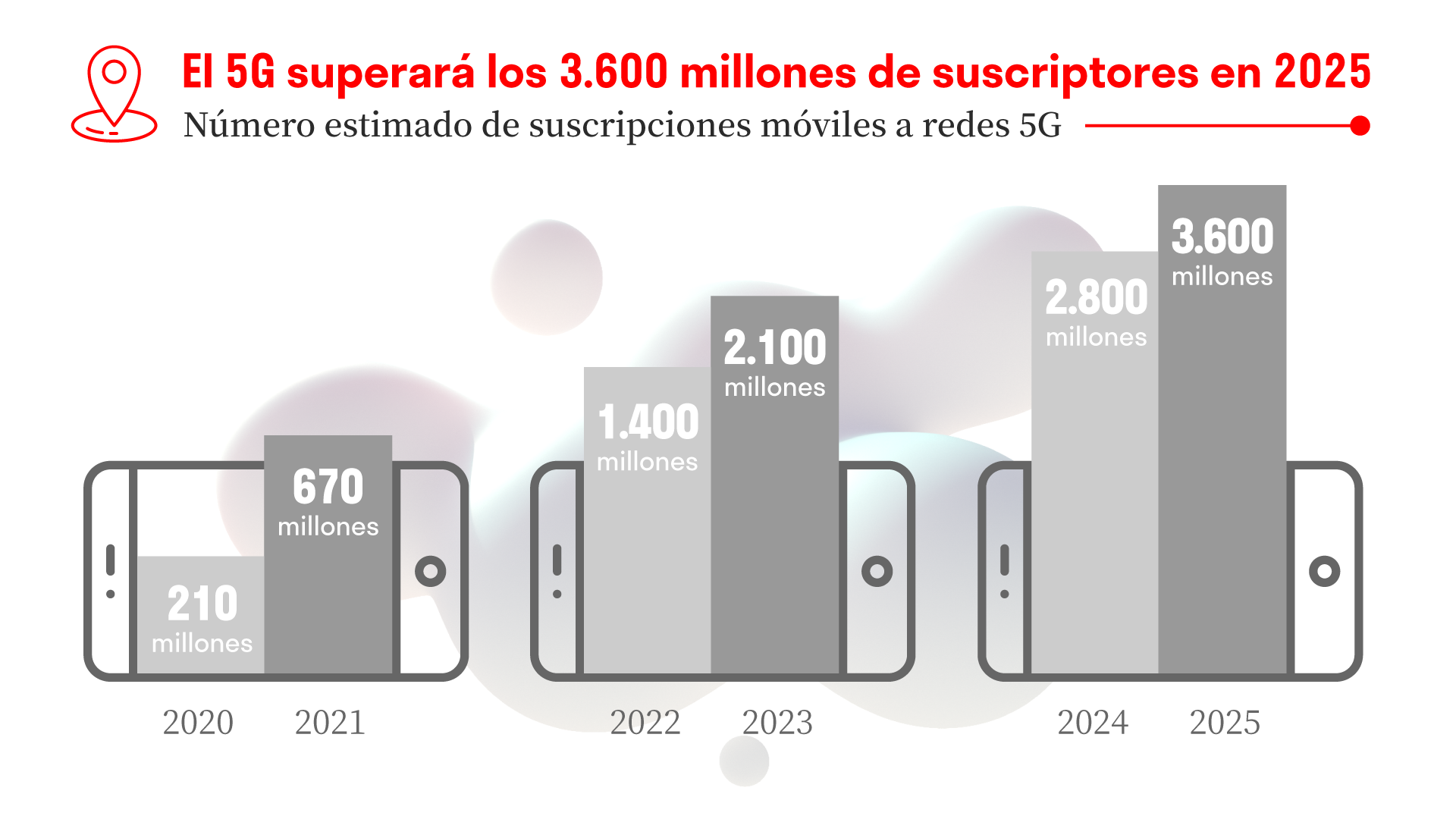The deployment and growth of the new 5G mobile technology worldwide was affected in 2020 by the Covid-19 pandemic. However, the sector seems to have already started to recover. Its deployment will accelerate this 2021. A year in which even 5G is about to become the predominant mobile technology in some advanced countries.
A report predicts that, even though the pandemic is not yet over, 5G connections will triple this year globally. To around 670 million, and to reach 3.6 billion by 2025.
Short-term expectations have been affected by the Covid-19 crisis. Still, it is believed that the global mobile industry will overcome these temporary challenges. Once the effects of the slow development of the new technology in 2020 have been neutralized, “strong adoption” of the technology is expected in the next 18 to 24 months.
This is because economic recovery. Accelerated network deployment and lower prices for compatible devices will be coupled with a greater appreciation by businesses and consumers for high-quality connectivity in the wake of the pandemic.
By the middle of the current decade, more than 75% of cell phones in the North American, Western European and Asia Pacific markets are expected to be connected to 5G networks. However, there are currently some “early adopter” countries where 5G is on the verge of becoming “mass market”.
Consumers’ thirst for connectivity is stronger than ever, and the acceleration of network deployments and the availability of affordable smartphones is making 5G increasingly accessible.
Data by region
The two countries currently leading the way in 5G deployment and growth are South Korea and China. Both economies continue to stand out for the “excellent” speed of their deployments. One in five cell phones in South Korea is already connected to 5G networks and China is close to achieving that goal by 2021.
In this regard, the pace of adoption of the new mobile technology in China is “staggering”. Seven out of ten smartphones sold in the first three months of the year were devices compatible with 5G networks.
The United States, after being the first country to launch it commercially, has hardly promoted it for the last two years. However, telecommunications operators have begun to give it much more prominence in the last six months.
This acceleration in commercialization has coincided with the increased availability of 5G-compatible smartphones. Thanks to this push, the United States will regain its leading status in 2021.
5G in Europe
The scenario in Europe is quite different. The delay of spectrum auctions during the Covid-19 pandemic has postponed network deployment in some markets. Such as France and the government’s stance on the role to be played by the Chinese company Huawei in this process has brought uncertainty.
However, these delays were not as long as many feared and some telecom operators moved quickly to sign agreements with alternative infrastructure providers.
As a result of spectrum allocation, progress in network deployment and the growing prevalence of 5G phones, they will account for more than half of smartphone sales in the region by 2021. As a result, most Western European countries are now not far behind pioneers such as Switzerland, the UK, Finland and Germany.
Smartphone manufacturers are playing a major role in getting 5G phones into people’s hands, thanks to prices that will drop to as low as $150 by 2022.
The global mobile market was hit hard by the pandemic and contracted by 13% in 2020. While its growth will remain sluggish in 2021, at only 6%, stifled by volatile demand and shortages of major components. The 5G segment will thrive and one in three handsets sold worldwide in 2021 will feature 5G.
In this context, 5G growth will not be limited to advanced markets in the coming years, although there are developing economies that continue to capture the benefits of 4G. This is the case of India, where strong competition and the ambition to create local solutions may lead the country to lead the adoption of 5G.
Growth areas
Other potential deployment and growth areas for 5G that have received a lot of attention, but will have limited impact over the next five years, are the Internet of Things (IoT) and 5G fixed wireless connections.
In particular, the Internet of Things will undoubtedly benefit from 5G. But the pandemic has caused delays in commercial development and standards for this technology. As a result, the number of connections in this field will continue to be of little relevance “at least until 2025”.
In the case of 5G fixed wireless connections, it is expected to remain “a niche technology”. Limited to a supporting role to traditional fixed broadband networks, such as fiber or cable, in many global markets.
On the other hand, risks to the speed and exact form of 5G adoption remain. These range from the “unpredictable nature” of the global pandemic and the high uncertainty facing the world economy, to component shortages for smartphones and other smart devices.
However, the mobile industry has made steady progress on the road to leapfrogging to 5G. Short-term challenges will do little to hinder its long-term progress.

Source: CCS Insight Consulting Report





